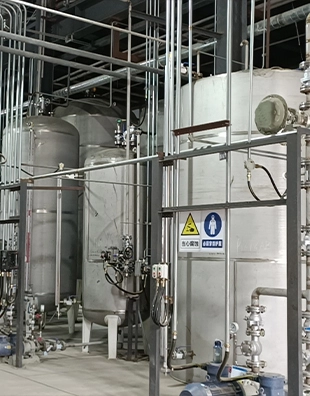coagulation and flocculation in water treatment
Coagulation and Flocculation in Water Treatment
Coagulation and flocculation are essential processes in water treatment, playing a pivotal role in purifying water by removing suspended particles and contaminants. These processes are crucial for delivering clean and safe drinking water, protecting public health, and maintaining the ecological balance.
Coagulation is the first step in the treatment process. It involves the addition of coagulants—chemical substances that promote the agglomeration of small particles into larger clusters called flocs. Common coagulants include aluminum sulfate (alum) and iron salts. When these coagulants are introduced to water, they neutralize the negative charges on suspended particles, allowing them to come together and form larger aggregates. This process is often enhanced by rapid mixing, which ensures an even distribution of the coagulant.
Following coagulation, the flocculation stage begins. This involves a slower mixing phase, where gentle agitation allows the tiny flocs formed during coagulation to collide and merge into larger, more settleable aggregates. Flocculation is a critical phase, as the size and density of the flocs influence their ability to be removed from the water during subsequent treatment stages. Effective flocculation results in larger flocs, which settle more readily during sedimentation.
coagulation and flocculation in water treatment

The combination of coagulation and flocculation is particularly effective for removing a wide array of particles, including colloids, silt, and organic matter. These processes significantly improve water clarity and quality, reducing turbidity and eliminating many pathogens and harmful chemicals. Furthermore, these techniques are often used in conjunction with other treatment methods, such as filtration and disinfection, to enhance overall water quality.
Optimization of coagulation and flocculation processes is critical to the efficiency of water treatment systems. Factors such as pH, temperature, and the concentration of coagulants must be meticulously controlled to achieve optimal results. For example, the effectiveness of aluminum sulfate can vary with pH, making it essential to adjust the chemical dosage based on water quality parameters.
In recent years, advances in technology and a deeper understanding of particle interactions have led to the development of new coagulants and improved flocculation techniques. These innovations aim to enhance water treatment processes, minimize chemical usage, and reduce environmental impacts.
In conclusion, coagulation and flocculation are foundational steps in water treatment that integrate chemical, physical, and biological processes to ensure clean and safe water for consumption. As urbanization and industrialization continue to challenge water resources, the importance of optimizing these processes cannot be overstated. By investing in research and technology, we can enhance water treatment efficiency and ensure the sustainability of our water supplies for future generations.
-
Understanding Polycarboxylic Acids: Properties, Applications, and Future PotentialNewsJul.28,2025
-
Scale Inhibitor Explained: How to Protect Your System from Limescale and Hard Water DamageNewsJul.28,2025
-
Scale and Corrosion Inhibitors: Essential Chemicals for Industrial Water System ProtectionNewsJul.28,2025
-
Polyaspartic Acid: A Biodegradable Polymer for Sustainable ChemistryNewsJul.28,2025
-
Isothiazolinones: A Versatile Antimicrobial Class with Industrial Power and Regulatory ChallengesNewsJul.28,2025
-
A Deep Dive into 2-Phosphonobutane-1,2,4-Tricarboxylic Acid (PBTC)NewsJul.28,2025





